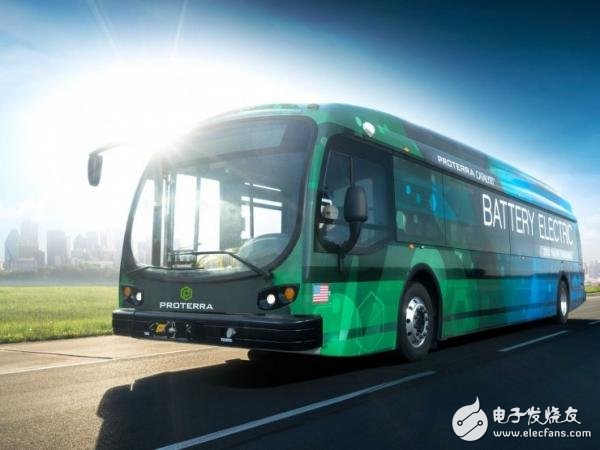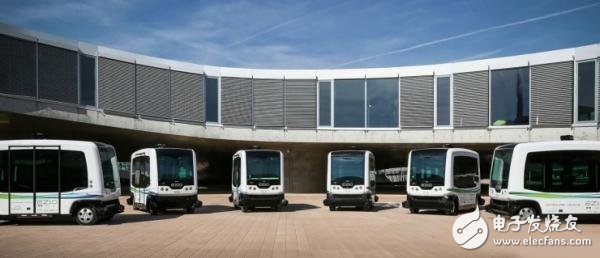Electric buses will be even more powerful when they encounter autopilot technology.
In the opinion of many transportation experts, electric buses will become even more powerful when they encounter automatic driving technology. Because they can automatically find places to charge when not in use, and can change the route flexibly according to passenger needs. In addition, they enable urban transport systems to significantly reduce operating costs, as 40%-80% of the cost of existing transportation systems is used for the wages of the relevant staff.

Editor's Note: When it comes to the future of transportation, I am afraid that no one will believe that the big public transporters who take passengers to stop and go will become the backbone. However, everyone in Finland is discussing public transportation.
Recently, there are a lot of self-driving buses on the road to Helsinki, Finland. It is part of the Sohjoa project. It can load 12 passengers for a quarter-mile excursion each time. The routes of these minibuses are also set. On the way are Helsinki’s famous restaurants and sauna centres.
Harri Santamala , Helsinki City Project Coordinator, said the small-scale autopilot test was just the beginning. After the spring of next year, they will bring more autopilot test cars to the streets to collect basic operational data and user feedback.
“We need to get more long-term data and establish a long-term mechanism for operations so that locals really like them,†says Santamala. "Now, riding a self-driving car is not everyone's daily life. Most of the passengers are journalists or people who come from outside."
It is human nature to love early adopters, so it is not uncommon for Easymile EZ-10 to be occupied by various curious people every day. The EZ-10 features a pod-like design and directly removes the steering wheel. From a traditional perspective, this car is actually more suitable for theme parks than for busy city roads. However, some planning experts, urban designers and industry drivers think they are the future of public transportation.
“How to solve the last mile problem has always been one of the crux of urban traffic,†says Santamala. “In my opinion, the self-driving bus is just right here. With the latest technology, we can adjust the driving style and communication of the self-driving bus in time. Through this test project, we found that the automatic driving can also be flexible. It is not difficult to keep pace with technology. Future autopilot technology can become a standard in the city's bus system."
Now we are in the blowout period of autopilot testing and technology development. Almost all auto giants and technology companies are investing in the transportation revolution. Whether it is London or Las Vegas, we are welcoming autonomous buses or shuttles. car.
On the whole, the bus is more like a supporting role in the “testing with the examâ€. The taxi system built after the rise of Uber and Lyft is the real carrier of autonomous vehicles. But in fact, it seems that the cumbersome bus may have a completely different new road in the future.

EZ-10
A bus that has changed its face can completely change traffic
In the United States, for example, a bus is a heavy-duty machine in urban traffic, and it undertakes more than 50% of the transportation tasks of the public transportation system. However, bulky buses are synonymous with “oil tigersâ€, which are becoming increasingly unpopular in many countries.
In New York, the number of people travelling by bus was 16% less in 2002-2015, while in Los Angeles, bus traffic was 16% less in just three or four years. “I don’t want to admit that the industry is in trouble,†Santalana said. "But now the times are different, and our travel is changing."
For buses, autonomous driving is an opportunity, but many people think that the technology is more beneficial to Uber and Lyft. It will systematically affect people's way of travel, private cars will gradually disappear, and the real estate market will also be huge. Variety. Cities like Florida and Altamont have seen carpooling as the best solution for the last mile, and they even used financial resources to subsidize taxi services to improve the efficiency of the entire transportation system.
Traffic planner Jeffrey Tumlin believes that although taxi services are becoming more and more popular, they also raise a big problem, that is, this cheap, comfortable travel service that provides door-to-door transportation greatly reduces people's walking and The opportunity to ride a bicycle.
Tumlin's argument is theoretically supported, and a recent study found that the emergence of taxi services has greatly increased the mileage of vehicles in major cities, which is why he is more optimistic about the future use of autonomous driving technology on buses.
In Tumlin's view, as the urban population density increases, the demand for green travel will increase significantly. Therefore, the main force of urban traffic in the future should be “high-capacity and self-driving cars with rubber tires.†In other words This is the new generation of buses.
“The city is denser and travel needs are stronger,†he explained. “If the transportation agency does not accept autonomous driving technology first, the concept of public transportation will die in the United States.â€
Like Helsinki's EZ-10, self-driving buses and shuttles efficiently and orderly transport passengers from large passenger centers to destinations. Although the birth of Uber and Lyft has made vehicle sharing a new trend, they only reduce greenhouse gas emissions, and large vehicles such as buses and shuttles are more effective in energy saving, emission reduction and blocking.
Incremental encoders provide speed, direction and relative position feedback by generating a stream of binary pulses proportional to the rotation of a motor or driven shaft. Lander offers both optical and magnetic incremental encoders in 4 mounting options: shafted with coupling, hollow-shaft, hub-shaft or bearingless. Single channel incremental encoders can measure speed which dual channel or quadrature encoders (AB) can interpret direction based on the phase relationship between the 2 channels. Indexed quadrature encoders (ABZ) are also available for homing location are startup.
Incremental Encoder,6Mm Solid Shaft Encoder,Hollow Rotary Encoder,Elevator Door Encoder
Jilin Lander Intelligent Technology Co., Ltd , https://www.landerintelligent.com